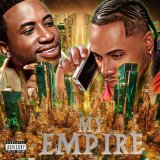Over the years, technology has impacted various aspects of our lives, driving innovation and creating new opportunities for growth and efficiency. It has brought notable advancements across several industries, such as telemedicine in healthcare, automation in manufacturing, blockchain in finance, live streaming in sports, and many more. Even the betting sector has changed as punters can now easily visit online sportsbooks to wager on betting IPL cricket, football, basketball, etc., from the comfort of their homes.
The entertainment industry is not left behind in this transformation, especially music. In the past, the sector relied heavily on physical formats like vinyl, cassette tapes, and CDs for distribution and consumption. However, the landscape changed dramatically with the advent of streaming technology.
This article delves into this evolution, tracing its path from the era of vinyl records to the modern landscape dominated by online streaming platforms like Spotify.
The Era of Vinyl Records
Vinyl records evolved from earlier forms of recorded sound, such as wax cylinders and shellac discs. In the 1940s, the introduction of vinyl as a recording material replaced the shellac composition, offering improved sound quality, durability, higher fidelity, and more extended playtime.
Vinyl records eventually became the major means of music distribution in the 1950s and 1960s. However, their large size and weight made storing and carrying collections difficult. Unlike digital formats, they weren't as portable or easily accessible.
Also, they were easily damaged by scratches, warping, and wear, impacting their playback quality with time. They also needed specific equipment like turntables and styluses, making them more costly and inconvenient.
Transition to Digital Formats
The emergence of compact discs (CDs) in the 1980s marked a significant advancement in music distribution technology. CDs provided several advantages over vinyl albums. They were significantly smaller and lighter than vinyl records, more durable and scratch-resistant, and produced greater fidelity audio.
The rise of the internet in the late 20th century eventually brought a better and simpler alternative to CDs. It paved the path for the rise of digital downloads as a popular way to obtain music. Users could purchase and download individual songs or entire albums digitally through platforms like Napster, eliminating the need for physical media.
This change offered convenience, allowing users to access music instantly from the comfort of their homes without the need to visit a physical store. However, this widespread availability of digital downloads generated worries about piracy and copyright infringement, resulting in legal disputes between artists, record labels, and file-sharing platforms.
The Dawn of Music Streaming
Music streaming revolutionized how people accessed music by providing easy access to vast song libraries. Early services like Napster and Pandora paved the way for this change.
Launched in 1999, Napster was a breakthrough peer-to-peer file-sharing program that enabled users to share and download music files for free. It immediately became a huge success, attracting millions of users worldwide. Pandora took a different approach to music streaming. It offered personalized radio stations based on users' musical preferences and feedback, and this algorithmic approach to music discovery became the platform's trademark.
Early Challenges of Streaming
These early music streaming platforms faced several challenges, including licensing issues, piracy concerns, and monetization. Napster especially faced significant legal challenges due to copyright infringement, ultimately leading to its shutdown in 2001.
Furthermore, the traditional music business initially approached these streaming services with either suspicion or resistance. After all, they were seen as a threat to established revenue sources and distribution outlets. Artists and record labels were particularly concerned about the influence that streaming would have on album sales and royalties.
Modern Streaming Services
Streaming became increasingly popular among music consumers around 2005. The industry has grown rapidly since then, with platforms like Spotify, Apple Music, and Amazon Music having millions of subscribers globally today.
These services use algorithms to provide personalized recommendations based on the user's listening habits, allowing for a tailored music discovery experience. Additionally, they often offer features like curated playlists, podcasts, and exclusive content to enhance user engagement. With millions of subscribers worldwide, modern streaming services have become the primary mode of music consumption, revolutionizing the music industry and how artists connect with their audiences.
Revenue
Most modern streaming services typically operate on a freemium model, offering users a choice between a free version and a premium subscription. The free version allows users to access the platform's music library but includes interruptions from advertisements. In contrast, the premium subscription offers benefits like ad-free listening, offline playback, and higher audio quality for a monthly fee.
These platforms generate revenue through subscription fees, ads, and brand partnerships. Subscription fees form most of their income, with users paying monthly for access to premium features. Partnerships with brands and advertisers can involve sponsored playlists, branded content, or targeted advertising campaigns that reach users based on their listening habits and preferences. Adverts, like sponsorships and display or audio ads, inserted between songs for free-tier users also bring in revenue.
Artist Compensation
Modern streaming services typically pay artists based on a pro-rata model. This model divides the total revenue generated from subscriptions and advertising among rights holders (labels, publishers, and artists) based on the number of streams their music receives. This means that artists earn a fraction of a cent per stream, which can vary depending on factors such as the streaming service, the country, and the artist's royalty agreement.
Some streaming services also offer additional ways for artists to earn money, such as through direct deals, licensing, and partnerships.
Conclusion
The evolution of music distribution and consumption from the era of physical formats to modern-day digital platforms has been a remarkable journey shaped by technological advancements. While vinyl records laid the foundation for music distribution, streaming technologies like Spotify, Apple Music, and YouTube Music have revolutionized how we discover, share, and enjoy music for years to come.








Have a discussion about this article with the community:
Report Comment
We're doing our best to make sure our content is useful, accurate and safe.
If by any chance you spot an inappropriate comment while navigating through our website please use this form to let us know, and we'll take care of it shortly.
Attachment
You need to be logged in to favorite.
Log In